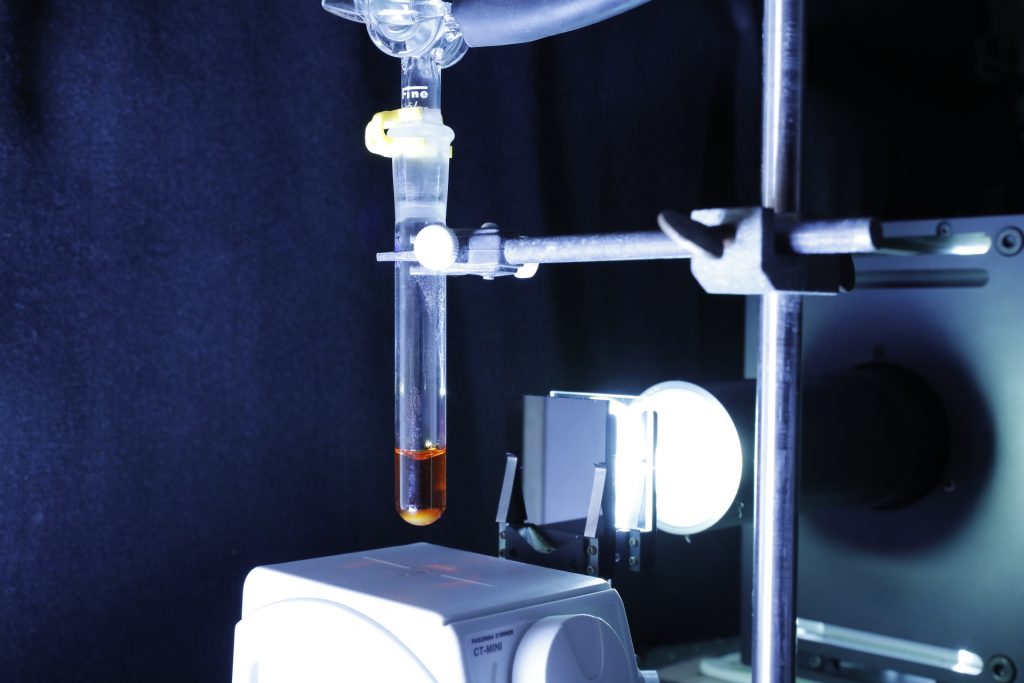With global warming getting worse, the world is focused on how to address the challenges of climate change. If we do not take action quickly, it is predicted that the global warming situation will reach the point of no return. CO2 is one of the main greenhouse gases causing global temperature rise, and, in order to control this rise, technology is needed which can remove CO2 from the atmosphere.
This has led to the development of “Direct Air Capture” (DAC) technology capable of recovering CO2 from the atmosphere. This technology is driving interest as a global warming solution centered on the absorption of atmospheric CO2. Unfortunately, however, it is not yet ready for practical application; that will require further technological innovation to achieve.
Researchers in the Imahori Laboratory in the Faculty of Engineering, Department of Industrial Chemistry are studying how to achieve practical application of DAC for CO2.
The Imahori Laboratory has developed a molecular material which is capable of absorbing and releasing CO2 and is powered by sustainable energy: light. This material has now been used to demonstrate, in principle, for the first time in the world, DAC of CO2 using only sustainable energy.

When petroleum and other fossil carbon resources are used as fuel or chemical materials, the end result is CO2 emissions. CO2 is a waste product produced by carbon resources, and it is nuisance in that it causes global warming.
However, if CO2 could be converted and reused as a carbon resource, it would become an extremely valuable resource, as it would thereby help replenish increasingly depleted carbon resources.
If the process of atmospheric CO2 capture and subsequent reuse as a carbon resource could all be powered by sustainable energy, this would make it possible to achieve sustainable carbon resource recycling. And this, in turn, would make it possible to overcome the problem of carbon resource depletion.
This sort of sustainable carbon resource recycling could also be adapted as a total carbon recycling system employed by space colonies and in other environments.
The captured CO2 can also be utilized directly. For example, captured CO2 can be used in regulating the CO2 concentration in greenhouse plantations and plant factories. CO2 promotes plant growth and can be used to increase the productivity of plant production.
Both global warming and carbon resource depletion are serious problems facing humanity. “By using sustainable technology to achieve DAC of CO2 and to turn CO2 into usable carbon resource, both of these problems can be addressed in one fell swoop,” says Associate Professor Imahori. In the Imahori Laboratory, study is underway on the research and development of more efficient CO2 capture, storage and supply systems for practical DAC of CO2, as well as development of technology for the sustainable use of CO2 as a carbon resource.
■ Main research content